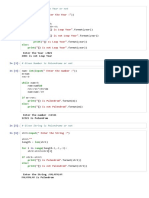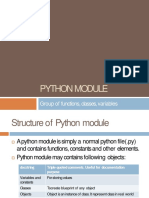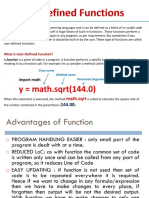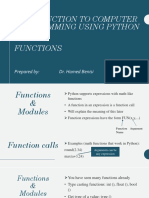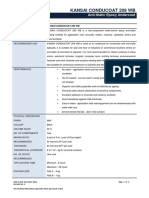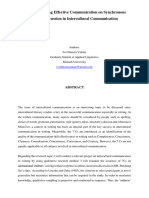0% found this document useful (0 votes)
95 views9 pagesMath Statistic Random
The document discusses various mathematical and statistical functions available in Python libraries like math, statistics, and random.
The math library provides common mathematical functions and constants like pi, e, square root, power, absolute value, trigonometric functions, ceiling, floor, etc. The statistics library contains functions for mean, mode, median of a dataset. The random library generates random numbers using functions like randrange, randint, random. Examples are given to illustrate the use of these functions.
Uploaded by
Ashmit SinhaCopyright
© © All Rights Reserved
We take content rights seriously. If you suspect this is your content, claim it here.
Available Formats
Download as PDF, TXT or read online on Scribd
0% found this document useful (0 votes)
95 views9 pagesMath Statistic Random
The document discusses various mathematical and statistical functions available in Python libraries like math, statistics, and random.
The math library provides common mathematical functions and constants like pi, e, square root, power, absolute value, trigonometric functions, ceiling, floor, etc. The statistics library contains functions for mean, mode, median of a dataset. The random library generates random numbers using functions like randrange, randint, random. Examples are given to illustrate the use of these functions.
Uploaded by
Ashmit SinhaCopyright
© © All Rights Reserved
We take content rights seriously. If you suspect this is your content, claim it here.
Available Formats
Download as PDF, TXT or read online on Scribd
/ 9













